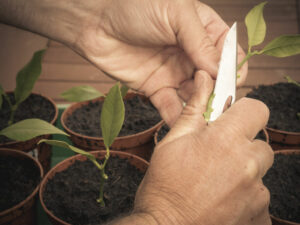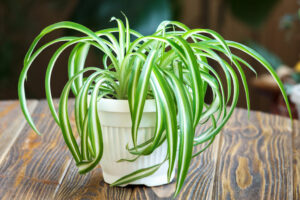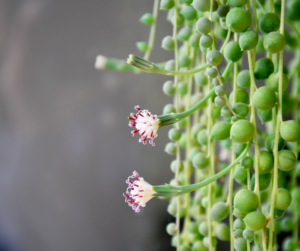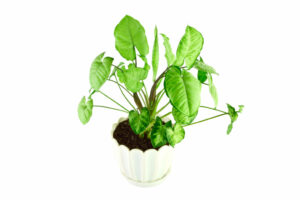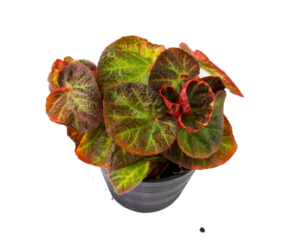HousePlantJoy is supported by our audience. When you purchase through one of our links, we may earn a small affiliate commission. As an Amazon Associate I earn from qualifying purchases. Your cost is not affected.
==================
Propagating Houseplants From Cuttings
You’re wondering if your plants are outgrowing. Maybe it’s time for you to do plant propagation. The wonders it can make from plant cuttings to having a new plant. Learning how to propagate should be the first step. Plus, you won’t have to spend money on propagating.
Each of your plants is likely to produce many offspring, which means more plants for you and others to share. The good thing here is you no longer have to spend money to buy new plants.
You might be wondering how to start your plant propagation journey. But that’s just so easy! Begin with easy propagating houseplant from cuttings. You can check that out below. You can have indoor plants you can propagate in water even from root cutting propagation. How cool is that, right? It’s possible to grow new plants. The choices are endless in plant propagation. However, note that every houseplant you have has different propagating methods. Propagating houseplants in water is the easiest method. It’s simply putting the stem in water. Then let it do its magic. But for more challenges, stem cutting propagation is an excellent choice but can be a daunting task.
Propagating houseplants from cuttings can be risky for starters. Often it’s unsuccessful. But do not underestimate yourself and your plant. Your houseplants won’t multiply by themselves. You need to take matters into your own hands. In this article, you’ll learn everything you need to know about propagating houseplants from cuttings.
What Is Plant Propagation?
Plant propagation, in layman’s terms, is simply creating new plants. It is both an art and knowledge. Typically, there are two types of propagation, sexual and asexual propagation. However, sexual propagation covers only the floral parts of the plant. It’s when the pollen (male) unites with the egg to produce seed. When talking about asexual propagation is getting any part from the parent plant. It can be the stem, roots, or leaves. From the parent plant, it will form new plants coming from itself.
Gardeners often use asexual propagation in propagating a plant. As you observed, using techniques like stem cutting propagation, root cutting propagation, and water propagation. Using this type of propagation is cheaper. Besides that, it’s also convenient. You will only need a pair of cutting tools and a pot—so simple and easy. Plant propagation doesn’t have to be complicated. It’s a written rule that even the cutting makes a great starter pack for propagation. You can read here on how to multiply your cherished plants through cuttings.
Types Of Propagation
No worries! Have this guide to help you how to maximize your plant fully. But as you know, each plant requires different methods of propagating. It’s not your typical one size fits all technique. Every process is a little different, and some are better suited to specific types of plants, using the right way of propagation for each plant. You’ll avoid making mistakes that can harm your plant. It’s best to read and research before first making your cut. Here’s the entire rundown of types of propagation you might want to consider when propagating houseplants from cutting.
Cuttings
It’s essential in plant propagation and the easiest to do for beginners. You need to cut the stem, roots, or leaf from the mother plant depending on what you want to propagate. There are indoor plants you can propagate in water through cutting, like pothos which thrives more on water propagation.
Grafting
Grafting will challenge your green thumb because grafting is far more complicated propagation. It’s the joining of two plants to create a new plant. Remember, you cannot graft all plants. This method is ideal for cacti and other succulents. The results are always amazing when you see two plants joined together.
Dividing
From the word “divide,” you are separating one plant into two or more plants. Dividing is a popular method for propagating a ZZ plant, or you can propagate a spider plant. What makes this simple is you only have to divide the grown offshoots from the mother plant. Transfer it to a pot, then there you have a new set of plant babies.
Layering
Little did you know you already have some layering propagation in your garden. Often this kind of plant propagation happens naturally. The stems may be from roots having them still attached to the mother plant. Suppose to know what plant in your garden can do layer propagation. These top apps might help you identify them.
Steps To Propagate Houseplants From Cuttings
Do you want to try propagating houseplants from cutting? Then this is for you because propagation by cuttings is another beautiful thing you can do in hassle and money-free growing more plants. Try this method that takes less time than growing from seeds. Most gardeners love and enjoy producing new plants from their favorite collection.
Step 1. Prepare the plants for cuttings
From the mother plant, use sharp scissors to cut about 4-inches long below where the leaf meets the stem (node). Remember to cut only where the new leaf comes from the plant. You may remove a few leaves or flowers from the stem.
Step 2. Plant rooting for propagation
After cutting the node, dip the petiole tips in a hormone rooting powder or gel. But this is optional. You can opt for natural plant rooting powders like cinnamon powder. Cutting is for faster root growth and to avoid root rot.
Step 3. Place the cut plant in water
Place the cutting in a glass if you’re propagating plants in water. Use lukewarm water, don’t overfill the top just enough to submerge the cutting in the middle.
Step 4. Prepare the soil
Another way is soil propagation, prepare a moist potting soil, then slowly put the cutting directly in the ground. Gently press the soil near the stem to make it sturdy.
Step 5. Monitor the roots of the propagated plants
Keep the cutting in the water or soil until the roots show. Patience is the key to this part. Optimally, at least an inch-long roots may appear after a week of propagation. Every plant varies; to be sure, estimate about 2 to 4 weeks before transplanting to allow the roots to mature and adjust quickly to the soil.
Step 6. Transfer the propagated plant
Carefully tug the cutting from the pot, then transfer it to its permanent pot with a decent amount of potting soil.
Step 7. Moist the soil
For plant cuttings in water, do the same process from soil propagation. In the meantime, ensure the soil is always moist to give the plant time to adjust from water to soil.
Step 8. New propagated houseplant
Newly propagated houseplants require the same care as the parent plant. They are a bit sensitive. That’s why keep them adequately watered and cared for after transplanting, as it causes stress on plants.
How To Propagate Houseplants In Water?
You only need water and your plant to do this propagation. So simple, right? Anyone can do this inside their home or even in tiny apartments. When you propagate plants that can grow in water, match it with a cute colored glass. Doing this adds aesthetics to your home’s interior. The best plants for water propagation are pothos, philodendrons, monsteras, and ZZ plants. Read and follow the step below on how to propagate your very own plant cuttings.
Tip 1
Pick your plant with a healthy and matured stem. Slit off about 6-inches of the base stem just right below the node. Doing this is important in stem-cutting plants because this is where the roots will sprout. Nodes are like extensions of a plant’s life.
Tip 2
After you make your cutting, remove the excess leaves and flowers, if they have any. By removing this, plant cuttings will focus the energy on growing the roots instead of on the leaves and flowers still attached to the stem cutting propagation.
Tip 3
Place your cuttings in a glass or vase, then fill it with lukewarm water. Only let 2-inches of the stem cutting plants dip in the water. Optional, you can add a sprinkle of rooting hormone to speed up the root development.
Tip 4
Best to put your plant cuttings on a window sill or anywhere as long as it receives bright and indirect sunlight.
Tip 5
Before repotting your plant cuttings, allow at least 2-3 weeks of propagation. To ensure the roots can now adjust to your soil mix. Then, gently place the stem cutting propagation in moist soil. Let the soil dry first before you water again.
Can I Root Any Plant Cuttings In Water?
The answer is yes, even though soil propagation has been the usual method. Nothing is wrong with propagating plants in water. Some plants grow from cuttings in water than in soil. You need to be careful in selecting your new candidate for propagation. You can choose from aglaonemas, pothos, peace lily and many more. These plants are known to love water if you know how to propagate them properly. In no time, you’ll be putting the ‘pro’ in propagation. Check the list below to give you an idea of what plants can root in water through plant cuttings.
- Devil’s Ivy/Pothos
- Anthurium
- Dumb Cane
- Philodendron
- ZZ plant
- Elephant Ears
- Spiderwort
- Baby Tears
- Begonias
How To Take Care Of New Propagated Plants?
Since you probably by now learned how to propagate plants in various ways. Taking good care of them is another page. This time, you will learn to take good care of your newly born plants. The secret ingredient in plant propagation every gardener should have is patience. Some roots often take a longer time to form. Just relax and chill when this happens. For now, you should learn how to care for your baby propagating house plants from cuttings properly. Continue reading because this will help you big time.
Sunlight
Since plant cuttings are now independent of the mother plant, place your plant propagation in bright with indirect sunlight to help their photosynthesis. Too much sunlight damaged the roots. You can opt for grow light in a low-light place.
Humidity
Optimal humidity is a must in propagating a plant. Too much heat causes the water and soil to evaporate quickly, losing r nutrients. Botanist recommends a plant humidifier for better moisture.
Water
Do not overwater your plant cuttings in soil. Water them lightly, just enough to cover the base of the stem. Using this is a pro-tip; use aquarium water for propagating plants in water because the fish waste is an excellent natural fertilizer. Clean water means more nutrients. Replace the water once a week.
Fertilizer
Apply rooting hormones for soil propagation. Lack of hormone production leads to drying and rotting. It’s better to buy rooting powder or make your own.
What Plants Can Be Propagated In Water?
You cannot propagate all plants in water. This should not discourage you, as there are countless ways to propagate a plant. Propagating houseplants in water is much easier for starters. There are specific plants that naturally grow in swampy areas. The perfect example is aroid plants which belong to the Araceae family. It can survive in water. However, there are still land plants than can be water propagated. Here’s a list of aroid plants and some indoor land plants you can propagate in water.
Aroid Plants
- Alocasia
- Anthurium
- Bakoa
- Caladium
- Calla
- Homalomena
- Mangonia
- Pothos
- Philodendron
Land Plants
- Spider Plant
- Wandering Jew
- Aloe Vera
- Ornamental Sweet Potato
- Wax Plant
- Moses in a Cradle
List Of Plants That Grow From Cuttings
Constantly buying new plants is expensive. But plant propagation will be your life-saver. You can multiply your plant collection for free. Here’s a list of plant cuttings you can grow at home. You can even ask your gardening friends for a cutting if you don’t have any of these. Try out propagating these houseplants from cuttings.
1. Pothos (Epipremnum aureum)
Do you want to try propagating pothos in water? Think no more! Pothos is the easiest plant that can grow in water. It’s an excellent practice for aspiring gardeners. They are everywhere, easy to grow, and add a perfect home accent. To propagate pothos, pick a healthy vine, then snip off right below the node. But place your cuttings in a glass with indirect sunlight. So very easy, right?
2. Snake plant (Sansevieria)
These long leggy and hard plants are a holy grail in the plant community. Snake plant propagation is very easy as long as you are patient. It’s worth the wait. Snake plants are the best light houseplants and great air-purifiers too. Pick the dark green leaves and avoid the old ones. But cut off near the base, then let it air dry for a few days before putting it in a clean jar of water.
3. Spider plant (Chlorophytum Cosomum)
Often nicknamed airplane plants because you can see them dangling in the air. Its yellow and white striped leaves and long wiry stems stand out. It’s trouble-free to propagate a spider plant. Using scissors, remove the plantlets or put them in soil or water, whichever you prefer. However, soil propagation is ideal instead of water. Spider plants care is easy peasy.
4. ZZ plant (Zamioculcas Zamiifolia)
ZZ plant is like a superhero plant in propagation. It can survive in low light and drought,t that makes it an ideal indoor plant. But you do not have to worry about propagating a ZZ plant. You only need its leaf from the mother plant. If possible, pick several leaves for more chances of survival. Insert each leaf in the potting mix with drainage holes. Now, all you need to do now is wait.
5. Chinese money plant (Pilea Peperiomioides)
Commonly called friendship plant since cuttings makes a perfect gift for friends. How cool is that, right? You gain a new friend and plant cuttings at once. The Chinese Money Plant also does much of the propagation work for you. When the baby pileas pop up at the base, cut the pileas closest to the soil. Put the stem submerged in water and never include the leaves. After 2 or 3 weeks, roots will start to sprout.
6. String of pearls (senecia rowleyanus)
But if you like green peas, you’ll love the strings of pearls as they are identical. Its long trailing vines make gardeners one of the best plants for hanging baskets. You can choose the layering technique or use the pearls’ water propagation string. For the layering method, cut 10 cm more plant cutting the fuller it looks, then lay the cuttings one part of a string under a bit of soil. For water, strip off the lower leaves and let them sit under the water. But wait for a few weeks for repotting.
7. String of bananas (senecio radicans)
From some angles string of bananas looks like jumping dolphins, right. Like, the String of Pearls, this vining plant has long, wiry stems and banana-shaped leaves. But string of banana propagation can be done in two ways: cuttings or layering. Cut about 10 cm; make sure it’s long enough. Afterward, let it air dry then lay the plant cuttings in loose soil—the same process of water propagation to the string of pearls above.
8. String of hearts (Ceropegia woodii)
Having a string of hearts always will feel like Valentine’s Day. Its heart-shaped Viney leaves make it a popular hanging indoor plant. String of hearts propagation isn’t complicated; you won’t even sweat. You can choose different propagation methods, whichever works best. Usually, this applies the same process to the string of bananas and pearls. So, you can just follow those steps.
9. Moses in the cradle (Tradescantia spathacea)
The stripey greenish-purple leaves of Moses in the Cradle add drama to any home. Since it grows offshoots, it’s effortless to propagate. Remove the offshoots from the stem. But you can plant it directly in the soil. Put it in a cute glass for water propagation. Both work fine; this will only take you minutes.
10. Arrowhead plant (Syngonium podophyllum)
In water or soil, arrowhead plants are not picky in propagation. It’s bushy and almost shaped like a heart, and its leaves make it an ideal indoor plant. Like other vine plants, it’s prone to sparse and flop. Don’t be discouraged; plant propagation is so easy. Snap off an inch below the node and take a few plant cuttings. Either place it in potting soil or water. Both will give you amazing results.
11. Strawberry begonia (Saxifraga stolonifera)
Its gorgeous viny and fuzzy leaves make strawberry begonia included in the list of house plants that grow in cuttings and indoors. Like the Spider Plant, it also produces offshoots. You can pin the runner directly to the soil. Pick a healthy offshoot, then place it on a jar of water across a windowsill.
12. The wandering jew (tradescantia pallida)
Bursting in color, wandering jews’ striking mix of purple, white and green foliage makes it stand out. Unlike other plants, wandering jew will not disappoint you aside from its fast-growing and low maintenance. It offers easy propagation through stem cuttings. Place it on a glass of water or potting soil, depending on what you have. It will root up more quickly than others, giving you quicker results.
In Summary
After reading the article, you already know how to propagate houseplants from cuttings in soil or water. What are you waiting for? Grab your pair of scissors, potting soil mix, glasses, and water. The sooner you start, the more plants you’ll produce. In-plant propagation, aside from the essential tools, you must have loads of patience. Here’s a list of the 12 easiest plants that grow from cuttings. Try a few more challenging ones after learning the basics. But remember, practice makes perfect. If you start now, you might complete your Christmas list early.
Read More
Houseplant Propagation Techniques
How to Propagate Boston Fern Plants


